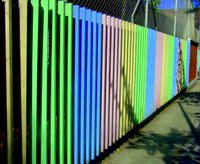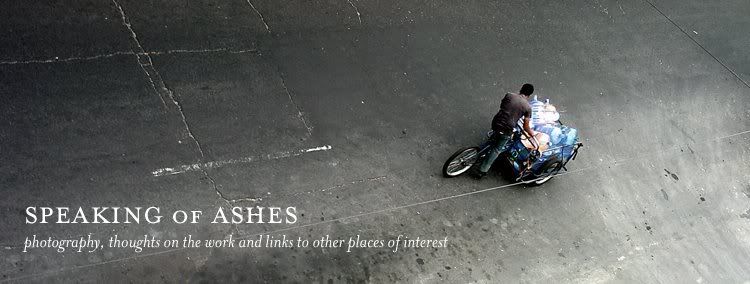more politics
 Yeah, so I don't really read the Washington Post much. Luckily Josh Johnson's Art Blog pushed me to this really quite interesting Phillip Kennicott review of the NEA 40th Anniversary and an exhibition, "Visual Politics: The Art of Engagement." Kennicott's take is really pretty interesting:
Yeah, so I don't really read the Washington Post much. Luckily Josh Johnson's Art Blog pushed me to this really quite interesting Phillip Kennicott review of the NEA 40th Anniversary and an exhibition, "Visual Politics: The Art of Engagement." Kennicott's take is really pretty interesting:
So you feel a kind of impotence in many of these pieces, not because they are weak, but because a vast void separates them from their target. The art hasn't necessarily been neutered, but it's been fenced in. And often the fences are of the artist's own making. Perhaps that's why the art here that deals most directly with fences, with separation, has the most impact -- especially when the artists avoid the symbols that demarcate them as part of an angry minority.I have long established sympathy with Fence Art. But further, I think Kennicott highlights the co-responsibility of both the politicians and the artists. And while I am not one to bash shrillness, the level of it in political art seems unabashedly obvious these days. I would suppose this has more to do with Americans never really understanding Fluxxus, and rejecting German art out of hand since Beuys's death. I really would love to know where the undergraduate education on Fluxxus went and what problem exactly do the people who end up getting tenured positions have with Beuys ?
I can't go into a huge defense of the NEA here, though I've never been anymore unhappy with them than I have been with the post-office. I never got any money from the post-office either. The artworks that the Washington Post put into their little 5 slide slide-show seems like it would go over all right on the Today Show. I fear the far bigger problem facing the political scene and the art scene is that so much of the art really is designed to be palatable to the folks at the Today Show. There isn't anything Fluxxus, (probably the most significant political art movement of the last 50 years) in the stuff we call political art now. It is like the art faculties took the very worst of the 80s and now we are stuck with it. There is, of course, political content in a Julian Schnable painting. And ?


No comments:
Post a Comment